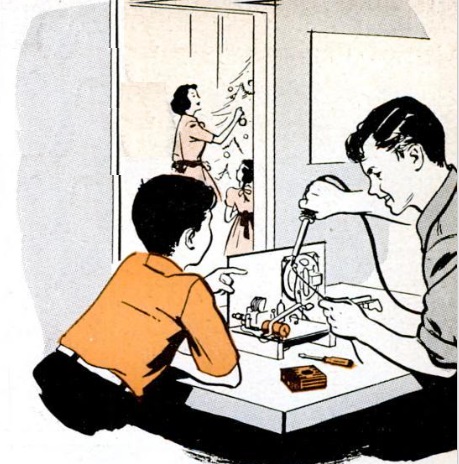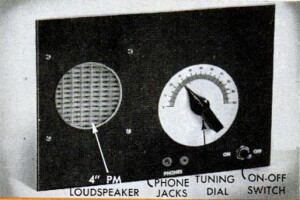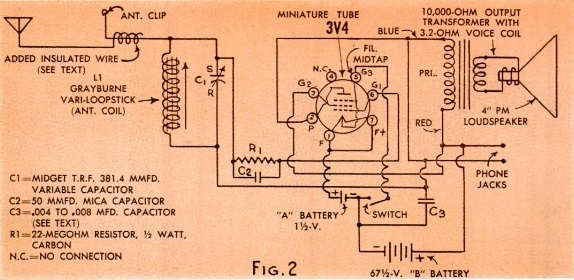
 Mom and little sister are busy decorating the Christmas tree, but Dad and Junior are doing something even more exciting: They’re putting together this simple one-tube radio, following the plans in the December 1953 issue of Popular Mechanics. While the circuit is simplicity itself, it’s powerful enough to provide loudspeaker volume. It’s designed for young builders to put together, perhaps, like here, with a little bit of help from Dad. The magazine billed the set as “Safe, Simple, and Sensitive.” Safety came from the use of batteries. Simplicity was the result of a wooden chassis and panel, and sensitivity was ensured with an efficient circuit.
Mom and little sister are busy decorating the Christmas tree, but Dad and Junior are doing something even more exciting: They’re putting together this simple one-tube radio, following the plans in the December 1953 issue of Popular Mechanics. While the circuit is simplicity itself, it’s powerful enough to provide loudspeaker volume. It’s designed for young builders to put together, perhaps, like here, with a little bit of help from Dad. The magazine billed the set as “Safe, Simple, and Sensitive.” Safety came from the use of batteries. Simplicity was the result of a wooden chassis and panel, and sensitivity was ensured with an efficient circuit.
And the set was more than just a novelty for kids: The magazine pointed out that it was a good idea to have a battery-operated set as a standby receiver for power failures or other emergencies.
The set uses a regenerative detector using a 3V4 tube. The feedback goes through C3, which is a fixed capacitor. The article notes that some experimentation might be required to get the value just right. The author used a .004 μF capacitor, but the article noted that if signals were too weak, this should be increased. On the other hand, if the set whistled due to feedback, then the value should be reduced.
A short indoor antenna could be used. If a long outdoor antenna was used, then it was coupled capacitively with a loop of wire, since this would improve the set’s selectivity.
The end result was that Junior would have a set that he built himself, or perhaps with a little help, and the family would have a battery set for use in emergencies.
The author of the article is Lothar Stern, who went on to write Electronics Made Easy,
which was published by Popular Mechanics in 1956. He was with the magazine until 1960,
when he went to Motorola, where he authored Fundamentals of Integrated Cirucits in 1968.
According to a review of that book in QST for December 1968, it was “one of the most complete texts on basic integrated circuits and their applications that has been published, and a valuable addition to any electronics man’s technical library.”
Some links on this site are affiliate links, meaning that this site earns a small commission if you make a purchase after using the link.

